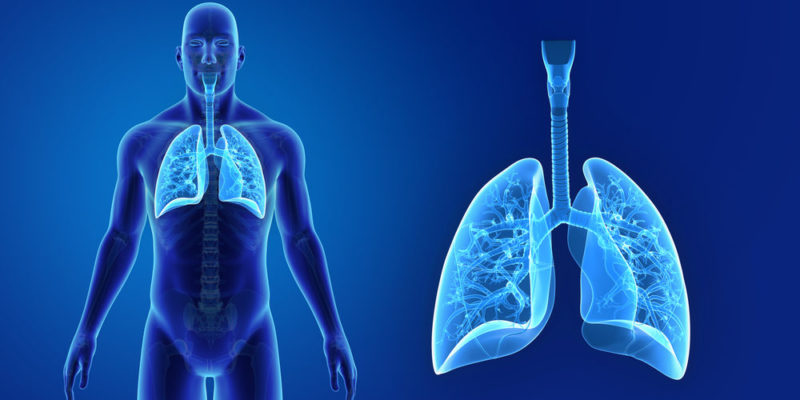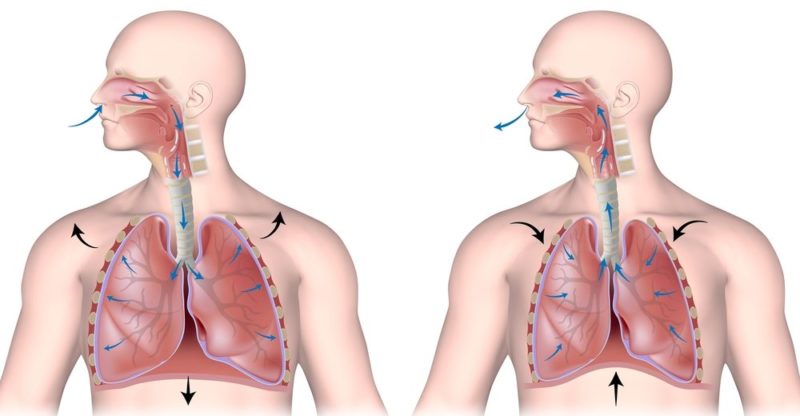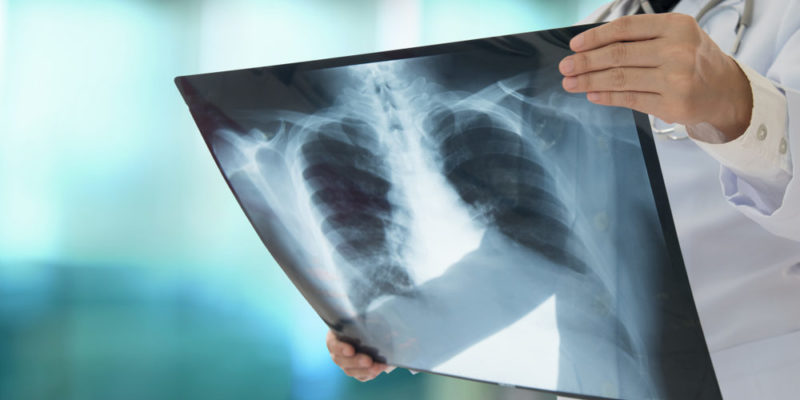We explain what the respiratory system is, what its organs and functions are. In addition, its characteristics and possible diseases.
What is the respiratory system?
The respiratory system is the set of organs that intervene in respiration. This system is responsible for the distribution of oxygen in the body. It is responsible for capturing oxygen and removing carbon dioxide from the body.
The organs of the respiratory system are not found in all living beings in the same way. Some animals have a type of respiration in which the cells do not carry oxygen to the rest of the body. Rather, their breathing is cutaneous. Examples of these animals are sponges or coelenterates.
Some beings have a respiratory system made up of gills. Others, meanwhile, have lungs. Evolutionarily speaking, branchial respiration is said to be more primitive than pulmonary respiration.
As for the respiratory system of human beings, it has lungs and takes 26,000 daily breaths while a baby breathes up to 51,000 times a day.
Organs of the respiratory system
The respiratory system is made up of different organs: nasal passages, nasal cavity, oral cavity, pharynx (which is also part of the digestive system ), larynx (here are the vocal cords), epiglottis (it is in charge of closing the trachea while the person is eating), trachea (cartilaginous tubes that retain dust particles), bronchi, bronchioles, pulmonary alveoli, and lung.
Functions of the respiratory system

The main functions of the respiratory system are:
- Provide the oxygen necessary for the body to live. When inhaling the person inhales oxygen. It is the respiratory system that is responsible for transporting it to the blood to provide oxygen to the different organs of the body.
- Eliminate carbon dioxide from it, by exhaling the air.
- Warm the air that is inspired.
- Filter and clean the oxygen itself.
Airways
For its study, it is classified into 2 zones.
- Driving zone. This includes all the anatomical zones that oxygen passes through before reaching the next zone (respiratory zone).
- Respiratory zone. It is the area where gas exchange happens.
Types of alveolar cells

In the respiratory system there are two types of cells that fulfill different functions:
- Type I pneumocytes. These cover between 95% and 97% of the total surface area of the lungs.
- Type II pneumocytes. These cells are found in less quantity (only between 3% and 5%). They secrete a substance called lung surfactant. This substance prevents tension within the alveoli. In this way, they prevent them from collapsing. This surfactant is made up of phospholipids and proteins.
Properties of the lungs

- Adaptability. In other words, the lungs exchange air. This causes some expansion or dilation of the lungs.
- Elasticity. Although they have the particularity of dilating, they contract thanks to this elasticity they have and which is necessary thanks to the fact that they have elastin proteins.
- Surface tension. It refers to the tension that occurs within the alveoli.
Muscles that act on the respiratory system
Although the muscles do not belong to this respiratory system, they act and intervene in respiration.
- The muscles involved in inspiration :
- Sternocleidomastoid
- Scalenes
- External intercostals
- Para-sternal intercostals
- Diaphragm
- The muscles involved in expiration :
- Internal intercostals
- External oblique of the abdomen
- Internal oblique of the abdomen
- Transverse abdomen
- Rectus abdominis
Pulmonary ventilation

It is a process that allows both the movement of air into the lungs (inspiration) and out (expiration). Although only two moments appear here, there is certainly another moment that little is taken into account: the moment without expiration or inspiration. That is to say, the moment of rest.
Lung capacity
There are different volumes of oxygen that enter the lungs. This is how they differ between:
- Tidal volume. It is the normal or usual volume that enters the lungs.
- Inspiratory reserve volume. It is called the type of oxygen that enters the lungs through excess and does so in a forced way.
- Expiratory reserve volume. It is the amount of air that is forced out of the body and excessively.
- Vital capacity. It refers to the amount of air that can be exhaled after a forced inspiration.
- Residual rate volume. It is the amount of air that remains inside the lungs permanently. In the case of adult humans, this amount can be up to 1.5 liters.
- Total lung capacity. It is the maximum amount that the lungs can hold.
Unusual breathing functions

- Cough. It is a reflex action that can come from the nervous, respiratory or digestive systems.
- The hiccups. It is an involuntary contraction of the diaphragm.
- The sneeze. Which occurs as a response to irritation from dust particles or odors.
- Yawning. Related to the nervous system and associated with physical and mental fatigue and with the person's sleep levels. This is also a way to increase the blood supply to the brain.
- The sigh. It is a way to level the volume of air that enters the brain.
- Laughter. From the point of view of the respiratory system, laughter comprises a series of actions that release air from the body in a short, weak, and intermittent manner.
Diseases of the respiratory system

Some specific diseases or pathologies that affect the respiratory system:
-
- Bronchial asthma
- Pulmonary edema
- Lung infarction
- Respiratory insufficiency
- Viral or bacterial infectious diseases.
- Cancer of the lung, larynx, trachea, pharynx, etc.
Take your General Knowledge to the next level
- What is a transistor, how it is composed and what are its various functions? Know all its general characteristics.
- We explain what food is, what its functions and food groups are. In addition, its characteristics and possible problems.
- Know what is algorithm, the parts it presents and how it is classified. Also, what are its characteristics, advantages and disadvantages.
- We explain what bullying is and what its main characteristics are. Also, what types of bullying exist and how it can be prevented.
- Know what are vertebrates, their origin and their characteristics. Also, how are they classified, what are invertebrates, and more.
- Know What are bacteria, how they are classified and the evolution of these organisms. In addition, its general characteristics and reproduction ...
- Understand what an absolute monarchy is, what are the general characteristics of this form of government and some examples ..
- We explain How Mexico got independence and what were its causes and characters. In addition, its characteristics and stages.
- See what continents are and what their main characteristics are. Also, the origin of their names and land limits.
- Be aware of what chromosomes are, what their shape is like and the structure they present. Also, what are its features and functions.
- Be familiar with what mountains are, how they are formed and the flora and fauna they present. Also, what are its general characteristics and importance.
- Be acquainted with what the Scientific Revolution was, its characteristics and main figures. Also, what changes it produced.
- See in detail what electricity is, its history and the types that exist. Also, what are its characteristics and features.
MA student of the TransAtlantic Masters program at UNC-Chapel Hill. Political Science with a focus on European Studies. Expressed ideas are open to revision. He not only covers Technical articles but also has skills in the fields of SEO, graphics, web development and coding. .
Leave a reply
Your email address will not be published. Required fields are marked *Recent post

Sport: What Is It, Types, Risks, Features, Characteristics and Examples

Dogs: Emergence, Features, Characteristics, Feeding and Breeds

Story: Definition, Elements, Structure, Features and Characteristics

